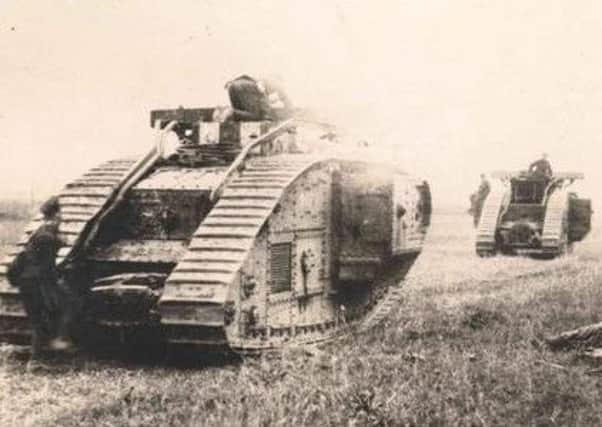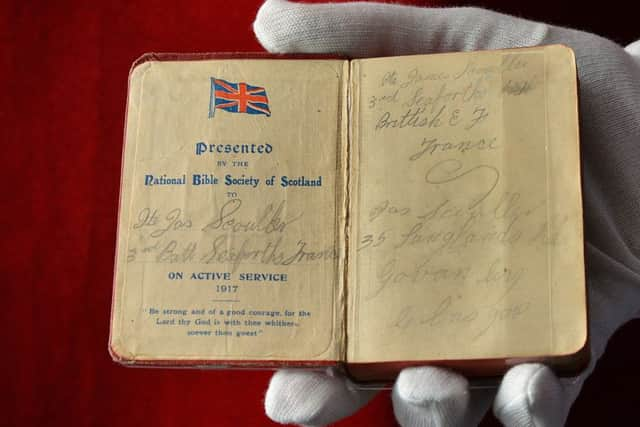Mystery of Stenhousemuir’s ‘Devil Dwarf’ war hero


While clearing out effects from his parents’ house down south Nick Barnard discovered a bible that had been presented to a Private Alexander Elder by the Scottish Bible Society in 1917.
The soldier had served in the headquarters company of the Highland Light Infantry’s 14th Battalion, and was wounded on June 5, 1918.
Advertisement
Hide AdAdvertisement
Hide AdNick’s wife Diane said: “I don’t know how it came to be in my in-laws possession, but we found from regimental sources that Alexander was on the medal roll - and I’d like to trace his family and return that bible to them, if they are interested”.


The soldier’s story, if ever fully uncovered, could be one of the most fascinating to emerge from the carnage of the Western Front.
This is because he was almost certainly involved in the 1917 Battle of Cambrai, famous as the first major engagement in which tanks were used in warfare.
The 14th started out as a Bantam Battalion, meaning all of its personnel were under 5ft 3ins tall.
Advertisement
Hide AdAdvertisement
Hide AdThousands had been refused army service because they were beneath regulation height, but as the clamour to join continued and the casualties at the front continued to soar the army chiefs relented.
The HLI bantams were nicknamed the Devil Dwarfs, and in several accounts are described as consisting mainly of small but muscular and aggressive factory and shipyard workers from in and around Glasgow.
They suffered terrible casualties, and in early 1917 the battalion ceased to be a bantam formation, because most of its men were by that time dead or wounded.
The devastated 14th was reduced to a mere cadre, and had to be reorganised into a new formation - in which Alexander suffered the wound which won him a medal.
Advertisement
Hide AdAdvertisement
Hide AdIt isn’t known whether he was one of the original under-sized recruits, or assigned to the battalion later, but he certainly fought in some of the HLI’s most desperate battles.
In one attack his company was cut off, despite the assistance of tanks, and although an English regiment broke through to relieve them other HLI companies were forced to surrender.
It’s presumed but not certain that he survived the war, but Diane and Nick have so far been unable to find any further information.
Does he have a living descendant in Stenhousemuir or somewhere else in the Falkirk area?
Advertisement
Hide AdAdvertisement
Hide AdDiane, who lives near Bristol, hopes a Falkirk Herald reader may hold the answer.
“Nick’s dad served in India in the Second World War, and his grandfather served in the First World War - but there’s no connection with Stenhousemuir or the HLI” she says.
“This bible, while a standard copy, could be important to someone”.
Anyone who may be able to help should email [email protected].